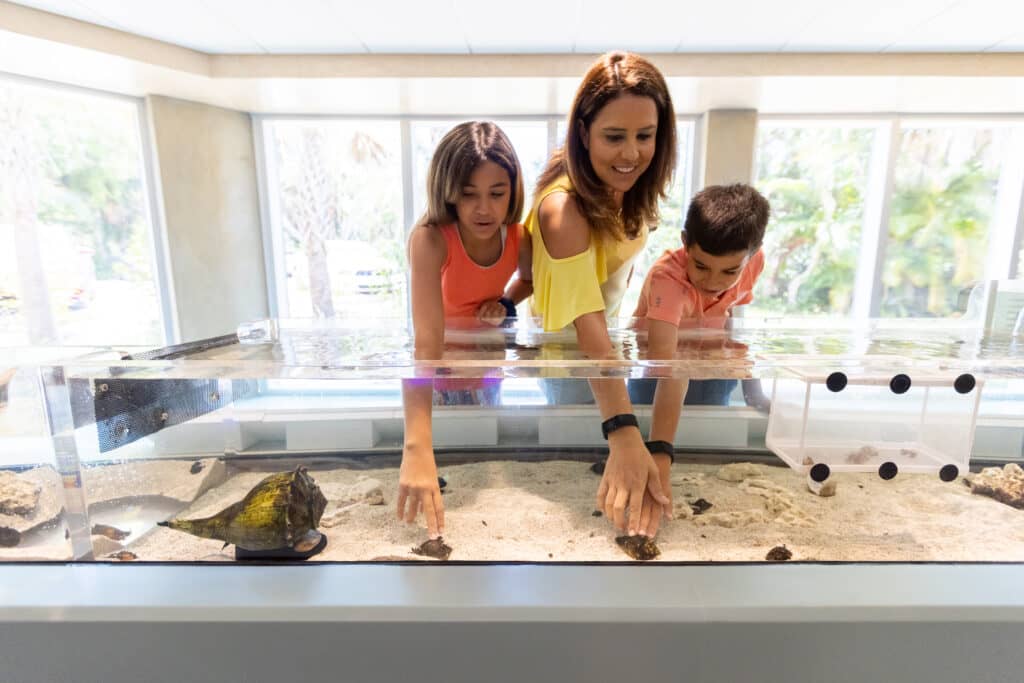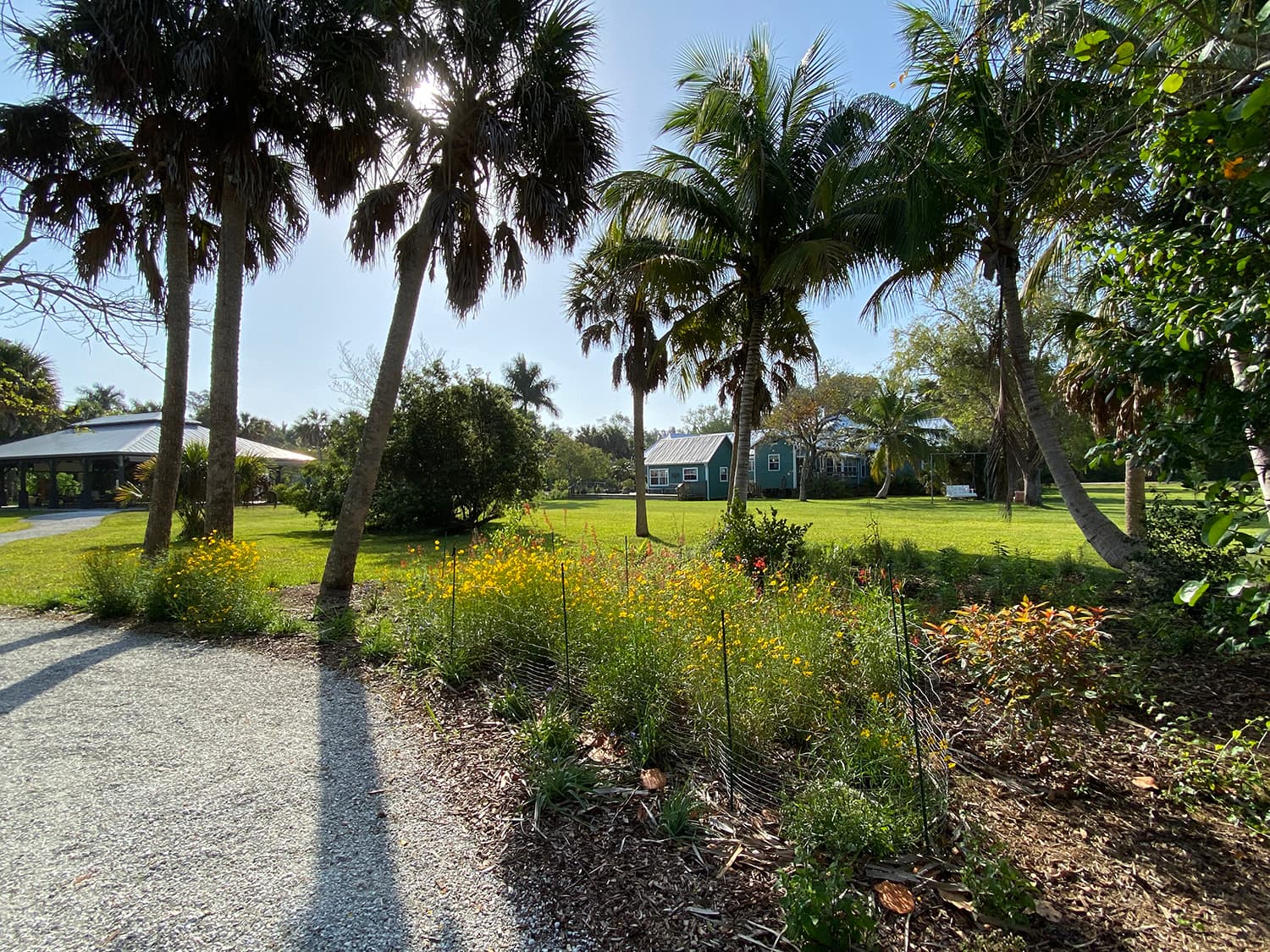
Bailey-Matthews National Shell Museum
The world's only museum dedicated to mollusks, featuring live aquariums, vast shell collections, and interactive exhibits.

Highlights
Must-see attractions

Social
From TikTok & Reddit
Best Time
Fewer crowds, more relaxed visit

Bailey-Matthews National Shell Museum
Best Time
Fewer crowds, more relaxed visit

Highlights
Must-see attractions
The world's only museum dedicated to mollusks, featuring live aquariums, vast shell collections, and interactive exhibits.
"A must-visit for ocean lovers, offering a unique glimpse into the fascinating world of shells and marine life."

🎯 Don't Miss the Octopus!
The Giant Pacific Octopus is a showstopper and a major draw for many visitors.
📚 Explore the Books
Discover a curated selection of books about seashells and marine life.

Highlights
Discover the most iconic attractions and experiences

Living Gallery of Aquariums
Downstairs
See live mollusks, octopuses, cuttlefish, and more in this immersive aquarium experience.

Great Hall of Shells
Upstairs
Marvel at an astounding collection of diverse shells from around the globe.

Interactive Touch Tanks
Downstairs
Hands-on fun for all ages, allowing you to safely touch various marine creatures.

Shells in Fashion Exhibit
Upstairs
Discover the fascinating use of shells in the world of fashion and design.
Plans like a pro.
Thinks like you
Planning Your Visit
Plan Your Visit to the Shell Museum
Island Access & Timing
Best Times
Insider Tips
from TikTok, Instagram & Reddit
🎯 Don't Miss the Octopus!
The Giant Pacific Octopus is a showstopper and a major draw for many visitors.
📚 Explore the Books
Discover a curated selection of books about seashells and marine life.
✋ Touch Tank Fun
Engage with marine life in the touch tanks; docents are often available to assist.
💡 Educational Insights
Learn about malacology and marine conservation through informative exhibits.
Tips
from all over the internet
🎯 Don't Miss the Octopus!
The Giant Pacific Octopus is a showstopper and a major draw for many visitors.
📚 Explore the Books
Discover a curated selection of books about seashells and marine life.
✋ Touch Tank Fun
Engage with marine life in the touch tanks; docents are often available to assist.
💡 Educational Insights
Learn about malacology and marine conservation through informative exhibits.
💰 Teacher Discount
Educators can enjoy discounted admission, a thoughtful gesture.
What Travellers Say
Reviews Summary
Visitors praise the Bailey-Matthews National Shell Museum & Aquarium for its informative exhibits, engaging touch tanks, and captivating aquarium displays, especially the octopus. The museum's dedication to marine science and conservation is highly appreciated, though some visitors note that the shell collection is still expanding post-renovations.
"Get museum that had lots of information. 2-3 exhibits, 20 minute video loop, touch tanks and a nice gift shop. I really enjoyed the ability to touch moon snails, sea hares, and abalones. I haven’t seen that at the different aquariums I’ve been to. They also have a separate touch tank with conchs and whelks that they alternate to give the animals a break.
It wasn’t crowded on a Tuesday in July. Be aware that there is a tool to cross the bridge onto the island. Also there are discounted prices ($10/person) for teachers and students - it’s very much appreciated!
Fantastic shell collection and more! Our stay was about 2 hours. Phase 2 of shell collection will come out later this summer (2025).
I teach marine science and I appreciate the care and effort put into this museum and its research. Many people do not know about the astounding diversity of invertebrates and this is a great way to expose them to it!"
K Caffee
"A wonderful museum on Sanibel. We stopped by on a busy, rainy Sunday. Downstairs there is a small aquarium with marine animal exhibits and lots of good information on mollusks and snails. A touch tbaj with a helpful museum docent is also downstairs. Upstairs is the Hall of Shells, which is undergoing expansion but in its current state is still well worth the time. So many beautiful and diverse shells from across the world. Don't miss the short film that goes to the heart of the Museum's education and advocacy mission. The second floor also has a very interesting exhibit on the use of shells in fashion, a must see.
Lastly, don't forget to stop by the gift shop, well curated and fun!"
Ian Michael Rogers
"This place was immaculately clean and well taken care of. The shells were awesome if you’re into that. The OCTOPUS stole the show for us & was the reason we travelled to this museum. If you want to see something magnificent and you’re close by, GO SEE THE GIANT PACIFIC OCTOPUS! They also offer a teacher discount!"
Kasey Dickerson
What People Like
What People Dislike
Frequently Asked Questions
🚇 🗺️ Getting There
The museum is located on Sanibel Island, Florida. Access to the island requires crossing a bridge with a toll. Many visitors find it a scenic drive.
Yes, parking is generally available at the museum. It's advisable to arrive early during busy periods to secure a spot.
While possible, it's more convenient to have a car to explore Sanibel Island and reach the museum. Ride-sharing services may have limited availability.
Most visitors drive to Sanibel Island. The nearest major airport is Southwest Florida International Airport (RSW) in Fort Myers, about a 45-minute drive away.
Yes, there is a toll to cross the bridge onto Sanibel Island.
🎫 🎫 Tickets & Entry
Ticket prices can vary, and it's recommended to check the official museum website for the most current pricing. They often offer discounted rates for specific groups.
Yes, the museum offers discounted admission for teachers and students, which is greatly appreciated by educators.
It's a good idea to check the museum's website for online ticket purchasing options. This can sometimes save time and ensure entry, especially during busy times.
The museum's hours can vary, and they have been undergoing renovations. Currently, the Living Gallery is open Tuesday-Saturday, 10 am-5 pm. Check their website for the most up-to-date information.
The museum strives to be accessible. It's best to contact them directly or check their website for specific accessibility information regarding ramps, elevators, and other facilities.
🎫 🧭 Onsite Experience
Don't miss the Living Gallery of Aquariums with live marine life like octopuses and cuttlefish, the extensive Great Hall of Shells, and the interactive touch tanks.
Absolutely! The touch tanks and aquarium exhibits are particularly engaging for children, making it a great family activity.
Most visitors spend around two hours exploring the museum, but you could easily spend longer if you're deeply interested in marine life and shells.
Yes, the touch tanks offer a hands-on experience, and the museum provides a lot of educational information about mollusks and marine life.
The museum is dedicated to malacology and marine conservation, contributing to public understanding and appreciation of invertebrate diversity.
🍽️ 🍽️ Food & Dining
The museum has a gift shop that may offer some snacks or drinks, but it's not a full-service restaurant. It's recommended to dine before or after your visit.
Sanibel Island offers various restaurants, from casual cafes to seafood spots. Check local listings for options near the museum.
Typically, outside food and drinks are not permitted inside museum exhibits. It's best to consume them in designated areas or before entering.
There are public beaches on Sanibel Island, such as Bowman's Beach, which often have picnic facilities.
Seafood is a local specialty, with many restaurants offering fresh catches. You'll also find casual dining and cafes.
📸 📸 Photography
Generally, personal photography is allowed for non-commercial use, but it's always good to check for any specific restrictions on flash photography or certain exhibits.
The vibrant aquarium exhibits, the diverse shell displays in the Great Hall, and the interactive touch tanks offer great photo opportunities.
Drones are typically not permitted inside museums or enclosed public spaces. Always check local regulations before flying drones.
Yes, capturing the marine life in the Living Gallery is encouraged, but be mindful of not disturbing the animals or other visitors.
A camera with good low-light performance is beneficial for the aquarium exhibits. A smartphone camera is also perfectly adequate for most visitors.
For Different Travelers
Tailored advice for your travel style
👨👩👧 Families with Kids
Consider visiting on a weekday to avoid larger crowds and allow children more space to explore. The museum's focus on hands-on learning ensures that kids will not only have a blast but also leave with a newfound appreciation for ocean life and conservation.
📚 Shell Collectors & Enthusiasts
While the museum focuses on education and conservation, it's a great place to deepen your knowledge and appreciation for the art and science of shell collecting. The exhibits can inspire future collecting trips and provide context for your own finds.
🌊 Ocean Lovers & Marine Science Buffs
Learn about the intricate details of shell formation, the ecological roles of mollusks, and the ongoing efforts to protect marine environments. The museum's commitment to education makes it an enriching experience for those seeking to expand their understanding of ocean ecosystems.
Deep Dives
In-depth insights and expert knowledge
The Unique World of Mollusks
The museum's Living Gallery showcases a variety of live mollusks, including octopuses, cuttlefish, and giant clams. These exhibits provide a rare opportunity to observe these often elusive animals up close, offering insights into their intelligence and adaptations. The museum also highlights specific species, like the Lewis Moon Snail and the Triton's Trumpet, detailing their characteristics and geographical distribution.
Beyond the live animals, the museum features extensive shell collections, demonstrating the incredible diversity in form, color, and texture that mollusks produce. These displays are not only aesthetically pleasing but also serve an educational purpose, illustrating evolutionary adaptations and the importance of shell preservation.
Post-Hurricane Ian Recovery and Resilience
Since the hurricane, the museum has been working on renovations and expansions. The Living Gallery of Aquariums was among the first areas to reopen, offering visitors a glimpse of the marine life that the museum cares for. The Great Hall of Shells and other special exhibition galleries have been undergoing updates, with phased reopenings planned.
Community support has been vital in the museum's recovery. Initiatives like 'Love Sanibel Back' highlight the collective effort to restore the island's attractions. The museum continues its mission of education and conservation, serving as a beacon of hope and a testament to the enduring spirit of Sanibel Island.
Educational Outreach and Community Engagement
The museum also collaborates with educational programs like 'Changing Seas,' a public television series, to highlight marine life and conservation efforts. This partnership allows them to reach a wider audience, sharing their expertise on topics ranging from specific mollusk species to the broader importance of marine ecosystems.
Furthermore, the museum engages with the community through events and initiatives, such as celebrating National Seashell Day and supporting local recovery efforts. Their gift shop is also well-curated, offering educational materials and unique items that support the museum's mission.






Social
from TikTok, Instagram & Reddit